Have you ever found yourself staring at your car’s paint, wishing it could look as immaculate as the day you first drove it off the lot? I remember feeling that way, believing that perfection was just a dream until I stumbled upon the art of buffing with a wool pad. This revelation transformed my detailing game, unveiling a realm of glossy finishes once thought unattainable. In this Ultimate Guide to Buffing with Wool Pad for Car Detailing, I will walk you through the intricacies of using a wool buffing pad, revealing secrets that set expert detailers apart.
We’ll explore not just the reasons why wool pads are favored by professionals, but when and how to use them effectively. Whether you’re a seasoned car enthusiast or a novice eager to learn, my insights tailored from years of experience promise to elevate your detailing skills and bring back that new-car shine.
What is Buffing with Wool Pad?

Did you know that the material of buffing pads can dramatically influence the outcome of your paint correction efforts? When I first grasped the art of car detailing, this little-known fact shaped the trajectory of my work. I always believed that car detailing wasn’t just a process, it was a passion. The choice of materials in this craft, particularly the type of buffing pad, can be a game changer.
Buffing with a wool pad, for instance, is a technique that tends to be misunderstood. It’s not merely about the wool itself but how this material interacts with the complexities of a vehicle’s finish. A wool pad, known for its abrasive nature, provides the perfect balance of aggressiveness and finesse, making it a staple in any detailer’s toolkit. Over the years, I’ve found that the wool pad is exceptional for cutting through painted surfaces, correcting severe imperfections in a way that foam or microfiber cannot.
As an automotive enthusiast who loves seeing results, the joy of witnessing a dulled finish transform into a mirror-like sheen is unmatched. The deep, lustrous clarity achieved through wool pads has kept me hooked on this detailing technique. Understanding its role and potential truly lays the groundwork for mastering the art of buffing.
Why Use a Wool Pad for Buffing?
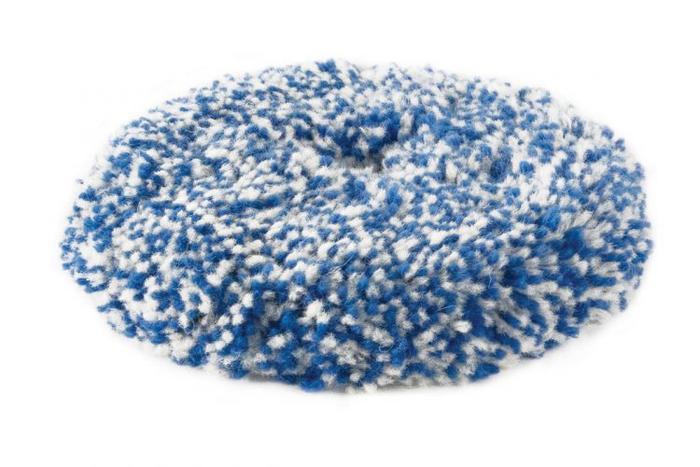
Are you ready to discover how a wool pad can help you achieve flawless paint correction? Through my extensive experience in car detailing, I’ve found that wool pads are integral tools for anyone aiming for professional-grade results. There’s magic in that dense, soft texture—something that synthetic counterparts just can’t match. From the touch alone, wool pads offer a unique tactile feedback that enhances control and precision.
One of the primary advantages of using a wool pad is its exceptional cutting ability. Its structure allows it to remove surface imperfections swiftly and efficiently, making it an outstanding choice for correcting deep scratches and oxidation. As a seasoned detailer, I’ve often relied on wool pads for those challenging jobs where precision and power go hand in hand.
Additionally, wool pads are incredibly versatile. They work wonders on a variety of surfaces, from those stubborn older paints to more recent finishes. Another distinct benefit is their longevity. When properly maintained, a wool pad lasts longer than many foam alternatives, providing consistent results across numerous uses. This durability translates to cost-effectiveness—an important consideration in the realm of detailing where every tool investment should count.
In the forthcoming sections of our ultimate guide, we will delve deeper into how to utilize these pads effectively, ensuring you harness their full potential. With the insights I’m about to share, achieving that pristine car finish is just a buff away.
Who Should Use Wool Pads?
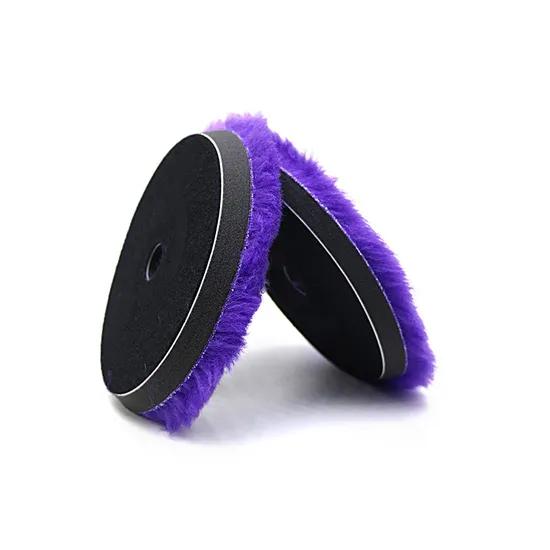
Wondering whether you’re ready to take professional detailing techniques to the next level? If you find yourself eager to delve deeper into the art of car detailing, then using wool pads might be your next step. Trust me, I’ve experienced firsthand how these pads can transform a car’s finish into something truly spectacular. But who exactly should venture into the world of wool pads?
From my journey in car detailing, enthusiasts who seek a deeper connection with their vehicles, aiming to unlock that pristine, showroom shine, should definitely consider wool pads. I remember the first time I used a wool pad—it was a revelation. The wool pad cuts through oxidation and surface imperfections like a pro, saving me effort while enhancing results.
Seasoned DIY detailers and budding professionals alike can benefit from wool pads. If you’re someone with a steady hand and a keen eye for perfection, who relishes the challenge of restoring a car’s original luster, wool pads are an essential tool in your arsenal. They allow for more aggressive cutting than foam pads, making them ideal for tackling severe defects.
In my experience, wool pads offer a unique blend of power and finesse, perfect for those ready to elevate their detailing skills. So, are you ready to embrace this level of refinement in your detailing journey?
When to Use Wool Pads in Car Detailing?
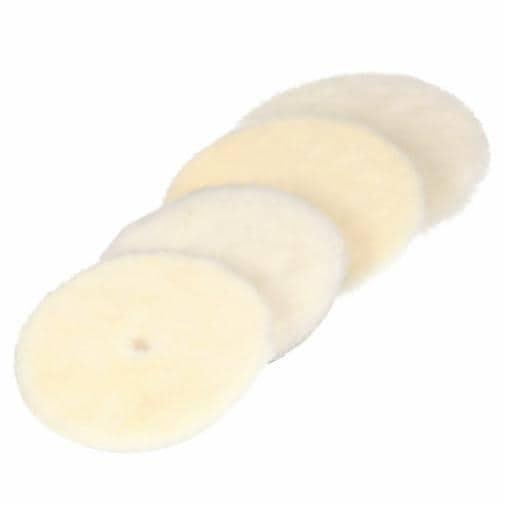
Have you ever thought about how the weather can influence your car detailing results? It might seem trivial, but the timing and conditions are everything when it comes to buffing with wool pads. From personalized experience, there’s a magical connection between the ambiance of our environment and the finish on a car’s surface.
I’ve spent countless hours in garages and driveways, battling with various elements to get that pristine, mirror-like finish. Using wool pads demands not only technique but also an understanding of timing. If you’re looking to tackle this task, it’s crucial to consider the atmospheric conditions.
Wool pads are aggressive, and while they can work wonders removing heavy oxidation and scratches, choosing the right time to use them makes all the difference. On cooler, overcast days, where the metal isn’t piping hot, you’ll find that the wool pad can glide more smoothly without risking overheating or paint damage. Always aim for when the temperature is moderate, below 85°F, as excessive heat can cause the compound to dry too quickly, resulting in swirl marks or incomplete correction.
Patience is your ally here; I’ve learned that rushing or ignoring weather conditions can turn a promising buffing session into a frustrating endeavor. Timing isn’t just about choosing the right moment but aligning it with the perfect conditions to elevate your detailing game.
How to Buff with Wool Pads: Step-by-Step Guide
Choosing the Right Wool Pad
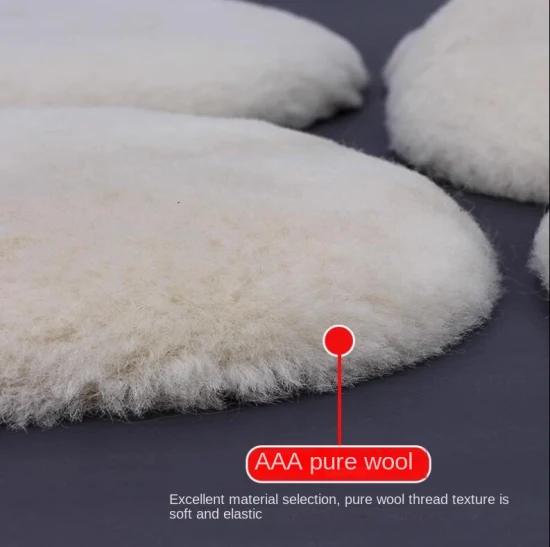
Have you ever stood in front of your detailing supplies and felt completely lost on which pad to choose? You’re not alone. As someone who’s wrestled with foam pads and wool buffing pad selections, I know this choice can make or break your car detailing efforts. The key lies in understanding the unique attributes of each pad. Wool buffing pads are excellent for aggressive cutting, which removes oxidation and severe swirls effectively compared to foam pads. My experience has shown that selecting the right pad boils down to evaluating the condition of your vehicle’s surface and the results you aim to achieve.
When I first started buffing, I assumed one pad fit all purposes. Over time, I realized that this couldn’t be further from the truth. A wool pad is your go-to for tackling heavy imperfections, while softer jobs may benefit from foam pads. Knowing your tools is as important as knowing your vehicle’s surface. As you progress through this article, pay attention to how choosing the right wool pad complements the buffing techniques you’ll master, ensuring every inch of your car looks pristine.
Preparing Your Surface
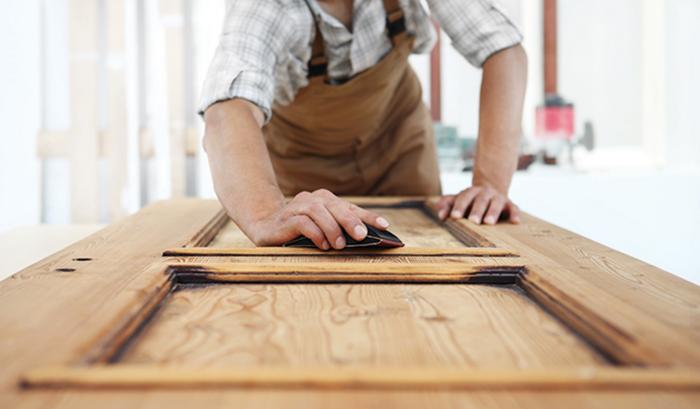
What if I told you that preparing your surface properly can make or break your entire buffing process? Before you even think about picking up a wool pad, you need to ensure your car’s surface is ready for the journey ahead. Starting with a clean slate is crucial—any lingering dirt or debris can be disastrous, resulting in scratches or uneven finishes. I’ve experienced firsthand the dread of realizing a surface wasn’t adequately prepped, leading to longer hours of paint correction and sanding.
In my journey through car detailing, I’ve learned that thorough preparation is non-negotiable. It’s not just about washing your car; it’s about removing any imperfections that might hinder the sheen you’re after. Sanding plays a pivotal role here, helping to smooth out any defects. By investing time here, you set the stage for a flawless finish, ensuring that when you buff with a wool pad, the results are nothing short of exemplary.
Buffing Techniques Using Wool Pads

Are you ready to dive into the art of buffing and uncover techniques that can elevate your detailing game? Mastering polishing techniques with wool pads isn’t just about surface shine; it’s a blend of experience and precision. Drawing from my extensive journey in car detailing, I’ve discovered that wool pads are unparalleled in their capability to cut through oxidation and scratches, providing exceptional finish with the right technique.
When engaged in buffing, I always begin with controlled, overlapping passes to ensure even coverage and avoid unsightly haze or swirl marks. My approach involves varying pressure and speed: lighter pressure for delicate surfaces and moderate speed to maintain temperature control without damaging the paintwork. Such buffing methods allow for a dynamic adjustment based on the condition of the paint, ensuring an optimal finish every time I work.
Integrating these techniques into your routine not only refines the skills necessary for expert-level detailing but also helps you appreciate the intricate balance between aggressiveness and finesse needed in effective buffing. Ultimately, post-buffing care is essential, ensuring that the pristine look achieved is preserved and the vehicle’s surfaces are protected. As you evolve in your detailing prowess, these wool pad techniques become invaluable tools in your arsenal, furthering your passion and expertise in car care.
Post-Buffing Care

How often do you clean your detailing tools, and do you truly understand the impact of maintenance on your results? From experience, I can tell you that the key to ongoing success in car detailing isn’t just perfecting the art of buffing; it’s about maintaining your tools for consistent, quality outcomes. After completing the buffing process, I immediately shift my focus to my wool pad care routine. I’ve learned that cleaning wool pads is not merely a final step; it’s an integral practice ensuring each detail is impeccable.
I begin by rinsing the pads thoroughly to remove residue and then spin them on a clean orbital buffer to dry. Neglecting these steps can jeopardize future projects, as pads clogged with compound remain inefficient and can even damage surfaces with lingering debris. Through years of detailing, I’ve noticed that disciplined maintenance not only extends the lifespan of my tools but also keeps every car gleaming to its fullest potential.
FAQs
What is a wool pad and why is it used for car detailing?
A wool pad is a type of buffing pad made from natural or synthetic wool fibers. It is used in car detailing to remove scratches, oxidation, and swirl marks from the car’s paint, providing a smooth and polished finish.
How do you use a wool pad for buffing?
To use a wool pad for buffing, attach it to a rotary or dual-action polisher. Apply a small amount of polish on the pad or car surface, then work in sections using overlapping motions with moderate pressure. Regularly clean the pad to maintain effectiveness.
What are the advantages of using a wool pad?
Wool pads are highly effective at cutting through defects quickly, reducing work time. They provide a high level of correction for deep paint imperfections and are often favored for their durability and long-lasting performance.
Can wool pads be used on all types of car paint?
Wool pads can be used on most types of car paint but caution is advised on softer paints, as they might be too aggressive. It’s recommended to test on a small area first and consult the car’s paint manufacturer for any specific guidelines.
How should you maintain a wool pad?
To maintain a wool pad, clean it regularly by brushing off excess polish and debris with a pad brush. It can also be washed with gentle detergent and air-dried after extensive use. Proper maintenance prolongs the pad’s lifespan and ensures consistent performance.
Conclusion
Are you ready to take your car detailing skills to the next level with the right tools and techniques? Embracing wool buffing pads can transform your car detailing game. In this journey, I’ve shared my personal insights on how wool pads create a superior finish, highlighting their unparalleled ability to remove imperfections while enhancing shine. As car enthusiasts, we recognize the importance of the right detailing technique. Wool pads are the ultimate tool for those committed to excellence in car care. I’ve provided a detailed guide to help even a novice understand the nuances of handling these pads—choosing the right one, preparing surfaces correctly, and executing the buffing process with precision. Remember, post-buffing care is essential to maintain that exceptional finish. Mastering these steps will not only improve your vehicle’s appearance but also elevate your detailing expertise. So, let’s make every detailing session as close to perfection as possible.